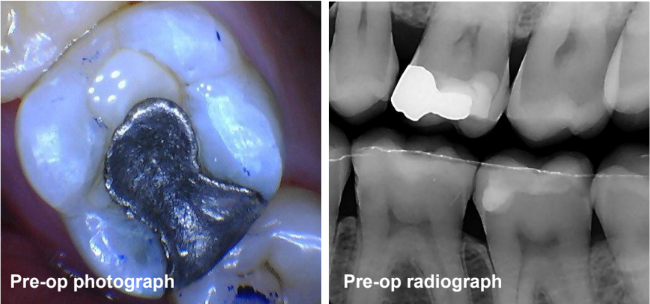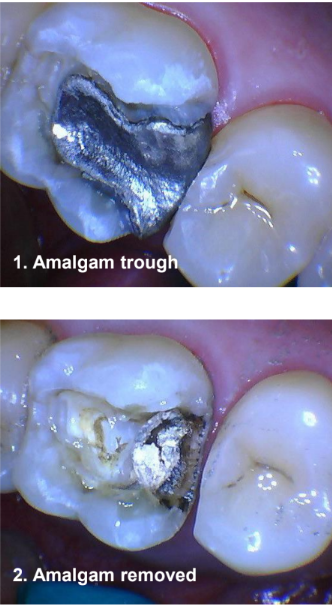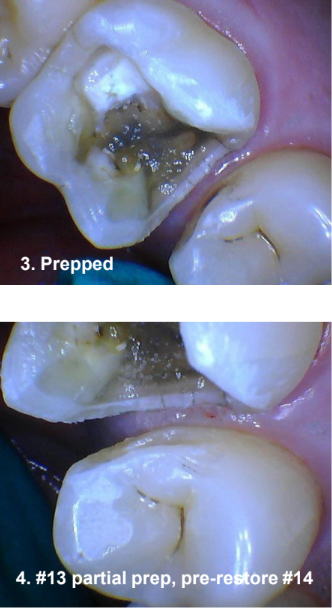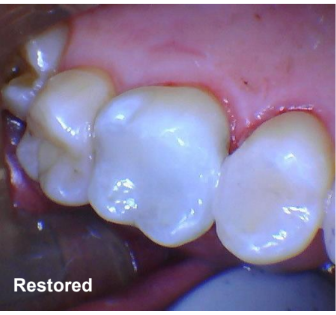Amalgam Removal on Tooth #14 and Class II Restoration on Tooth #13
1 MIN READ
Amalgam Removal on Tooth #14 and Class II Restoration on Tooth #13
By Joshua Weintraub, DDS on May 21, 2022
Case Summary:
A 46-year-old male patient presented to the practice for his second appointment. The oral evaluation revealed a very old and defective amalgam on tooth #14 MOBL with some composite surrounding it. The pre-op radiograph showed that tooth #13 DO also became decayed because of iatrogenic damage. The clinical objective was to remove the amalgam on #14 MOBL and decay on #13 DO and restore both teeth. The treatment was completed using a combination of Solea and a highspeed handpiece, all without anesthesia.

Technique Used:
The dentist began the treatment by removing the failed amalgam restoration on tooth #14 MOBL. No anesthetic was used. Solea was utilized to trough around the amalgam and outline the preparation. The 0.75 mm spot size and cutting speed between 50- 60% with 100% mist were used to ablate enamel at cavosurface margins until the dentin was reached. Once the troughing was completed, the dentist sectioned the amalgam and removed it with a high-
speed handpiece and a bur. Notably, the amalgam was removed without anesthetic due to the analgesic effect established with Solea at the beginning of the procedure. As a next step, the preparation was completed using the 1 mm spot size and cutting speed between 30-40% with 100% mist. Then, the dentist proceeded to work on the adjacent tooth #13 without anesthetic and removed decay with the laser. Cavosurface margins of both teeth were beveled with a diamond bur. Bands and wedges were placed, and teeth were restored with composite. The total procedure time, from start to finish, was under 50 minutes.


Results:
With Solea, the restoration of these teeth was incredibly precise. The dentist finished the treatment, that would potentially have taken multiple appointments, within a single sitting. This enables the dentist to see more patients
per day and perform more procedures in one visit, which increases his productivity while improving patient experiences. The patient was excited to have both teeth restored in just over 45 minutes so he could get back to work. He was also happy to avoid the injection and hours of numbness afterward.

Solea Advantage:
- No anesthetic was used.
- Reduced procedure time to less than 50 minutes compared to approximately 1 hour 20 minutes with traditional tools.
- The patient’s occlusion was easily confirmed because the patient wasn’t numb, which potentially avoided a follow-up appointment for a bite adjustment.
- Patient received a much better experience that includes not being injected with anesthesia and a shorter appointment time.
A Novel Approach to Treating Hairy Tongue
Case Summary: A 69-year-old woman presented to the clinic at Midwestern Universi...
1 min read
Infant Lingual and Maxillary Frenectomies
Case Summary: The patient, a 10-week-old male infant, presented with a Class III...
1 min read

